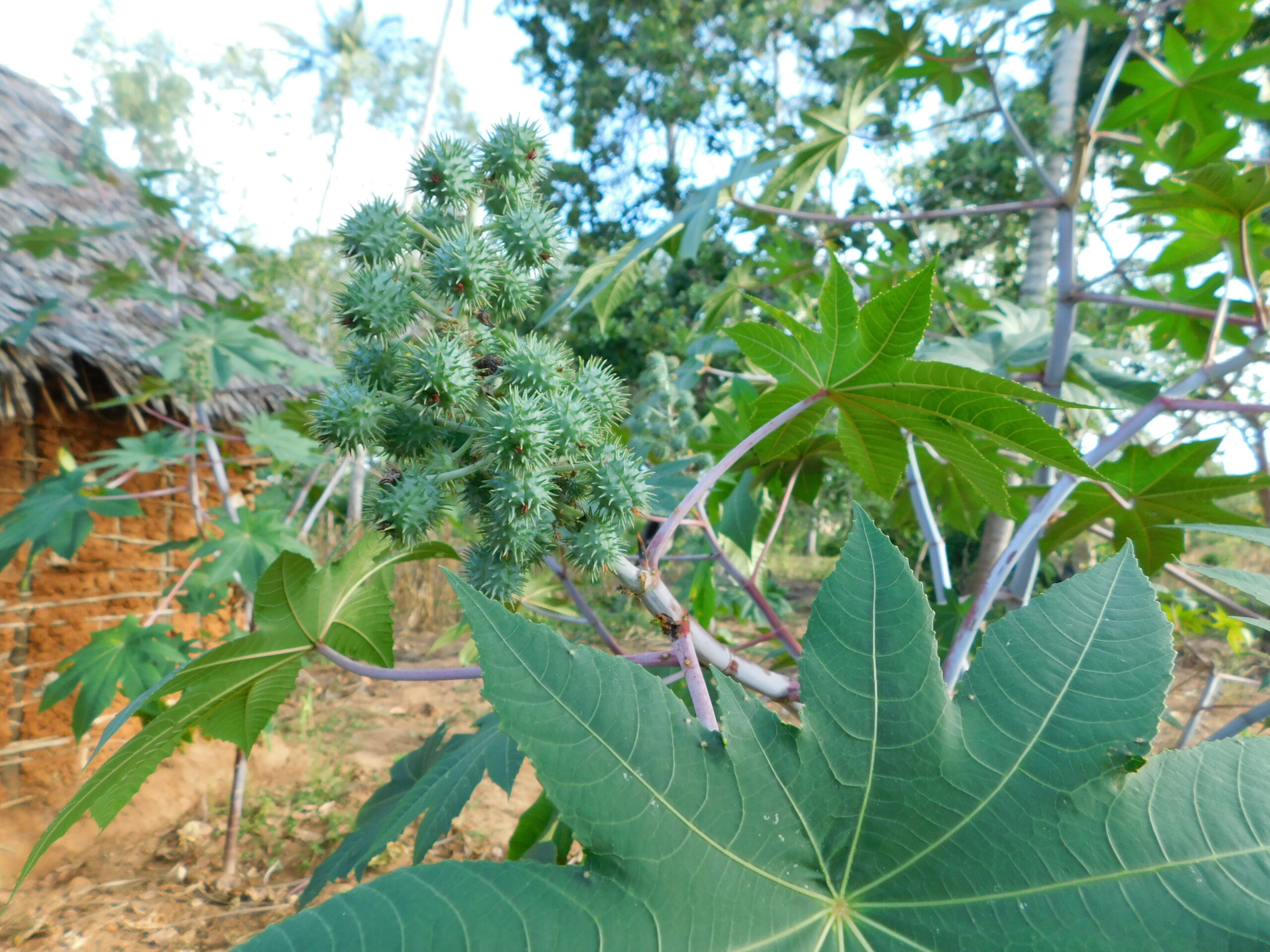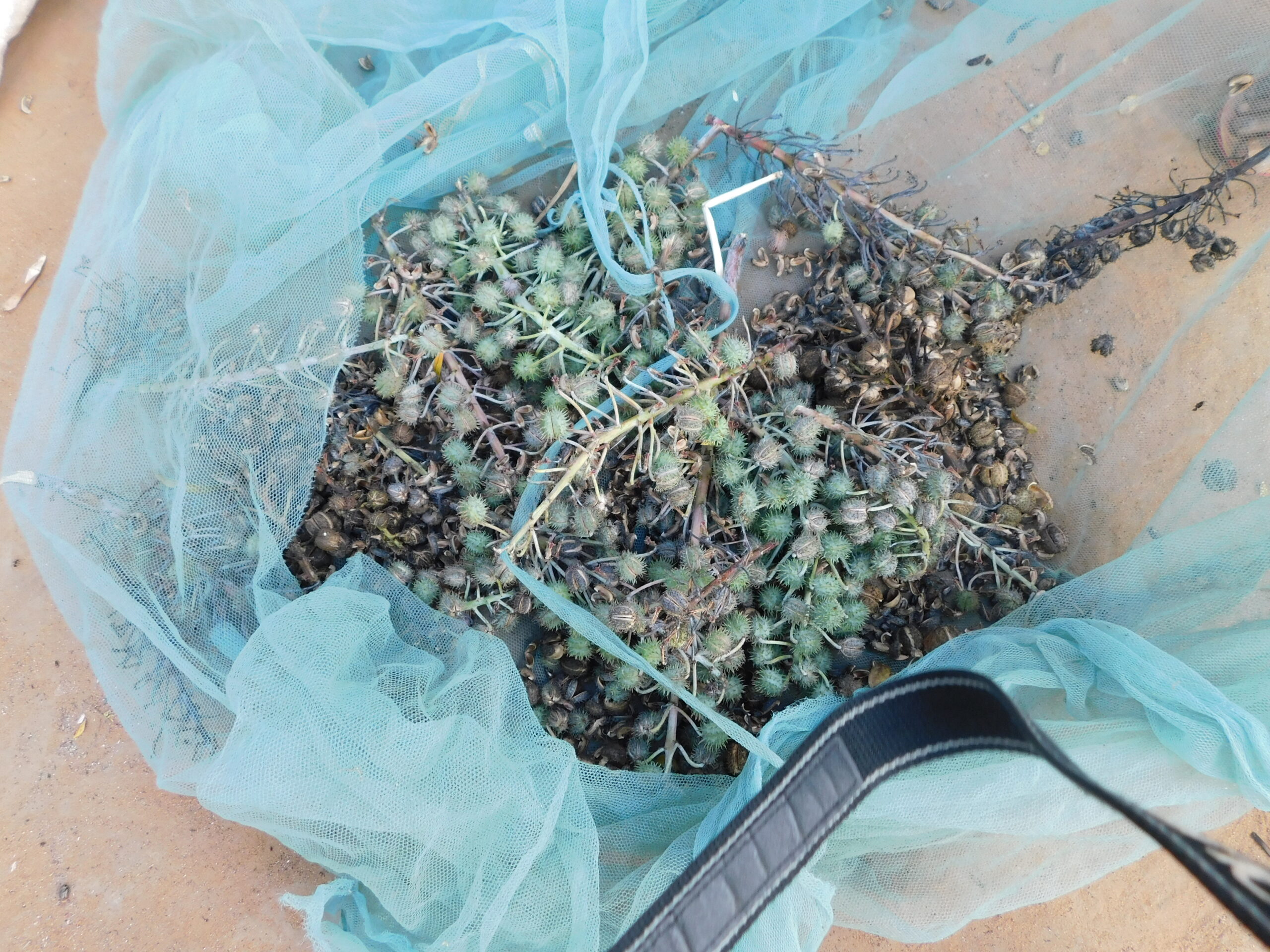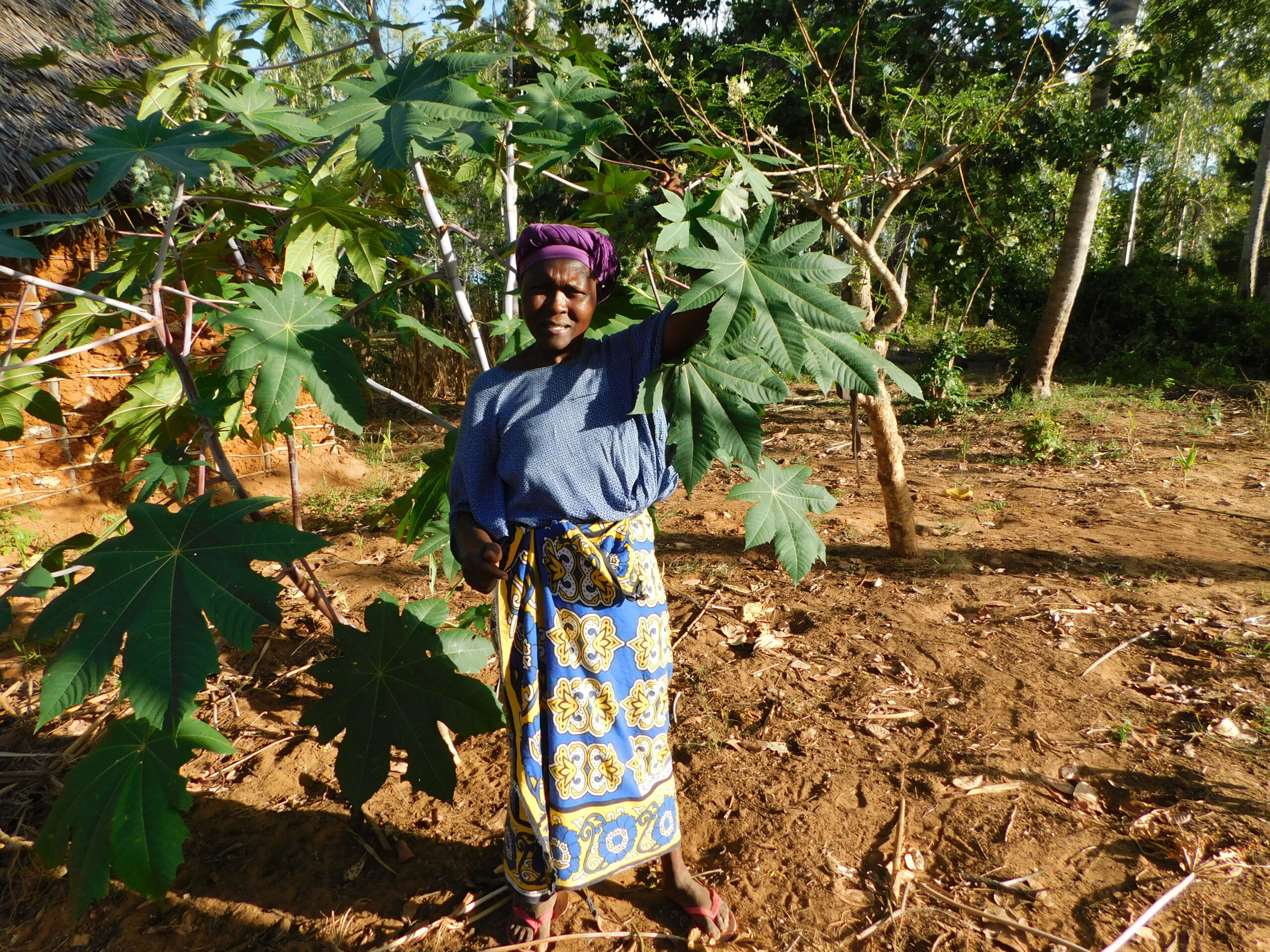By Mazera Ndurya
Kilifi County, Kenya: For Doris Mwazia, a member of the Mkongo group in Matsangoni, Kilifi county, farming was nothing more than maize and cassava. Occasionally, depending on the weather she would plant green grams and cowpeas.
She is one of the farmers who have taken to cultivating castor oil crop which was introduced in the area as part of the strategy to adapt to climate change as well as an alternative source of revenue.
Most parts of the Kenyan Coast region are food insecure and this is largely due to erratic or at times complete failure of rains. But even with the scarce rains, most of the indigenous farmers still insist on planting maize leading to poor or no harvest at all.
As Doris would put it, the seasons have changed as a result of climate change which has completely affected the agriculture patterns because rains are no longer reliable. Although some have resorted to charcoal burning and cutting trees for firewood as a source of livelihood, this has further compounded the drought situation leaving a trail of hunger and starvation.
However, some women have seen the need to diversify and try other crops to provide food for their families as well as earn some income for other needs. This story focuses on alternative crops that are easy to grow and require little rain to reach maturity after slightly over two months.
Castor oil crop is now becoming a savior and the women of Mkongo in Kilifi County testify can attest.

The plant grows without anyone caring about fertilizer or pesticides to boost production but to the residents of Mkongo in Matsangoni, Kilifi County castor farming is taking a new meaning after getting training and more insight on the value of the plant from the National Agricultural and Rural Inclusive Growth Project (NARIGP).
NARIGP decided to introduce castor farming on a commercial scale following the adverse effects of climate change countrywide. The main aim was to pilot the farming of castor to see if it can be successful within the Coast region. To the farmers’ amazement, the outcome of the trials was impressive as they got a good harvest making castor growing an alternative crop for semi-arid areas to earn a decent living.
Interestingly, although not scientifically proven, the members who are mostly women said the castor seeds are also used for family planning. One dried seed when swallowed can prevent a woman from conceiving for about one year.
“This project was introduced in our area in April 2022 by NARIGP and although it was a pilot, we are happy that we didn’t experience any challenges. This crop doesn’t require fertilizer provided there is rain and it does very well in this area.
“The reason for introducing this crop here was to find an alternative source of income to maize, cassava, and other crops. We realized that this crop is not costly to cultivate compared to other crops,” she told the SmartFarmer.
Albert Chiro Deche is a youth from Matsangoni ward and is m among the Castor oil crop farmers.
For him the reason for taking to castor oil crop farming was to beat the effects of climate change. “This plant is not seasonal like other crops, it grows all year round,” he said.
“One of the benefits of this oil is providing relief for back pains. It also helps in reducing insomnia as well as bilharzia,” added Deche.
Castor is not hard to grow although there are a few challenges as the farmers explained.

Although it has many uses, the little training the farmers have had enabled them to understand a few things that must be taken seriously when using the castor oil which they make locally.
According to the farmers, castor has a lot of benefits that are still not known across the country. Castor oil is a multipurpose vegetable oil that people have used for thousands of years. It’s made by extracting oil from the seeds of the Ricinus communis plant.
These seeds, which are known as castor beans, contain a toxic enzyme called ricin. However, the heating process that castor oil undergoes during production deactivates the ricin, allowing the oil to be used safely.
Castor oil has a number of medicinal, industrial, and pharmaceutical uses. It’s commonly used as an additive in foods, medications, and skincare products, as well as an industrial lubricant and biodiesel fuel component.
In ancient Egypt, people burned castor oil as fuel in lamps, used it as a natural remedy to treat ailments like eye irritation, and even took it to stimulate labor in pregnancy.
“We were mainly looking at this plant in light of agri-business. This crop in this project is meant to produce castor oil which is multipurpose,” said Mwazia.
How to grow and process Castor oil
Sow the seeds 1-1½ inches deep. Seedlings should start coming up in 1-3 weeks. The young plants grow quite quickly and may need repotting into larger containers before transplanting outdoors. Place the plants outdoors in full sun and deep, rich soil about 4 feet apart.
Castor oil is extracted from the castor bean or castor seeds, which has a wide variety of uses in Ayurvedic medicine and cosmetics. The oil was also used as an engine lubricant and for burning lamps in earlier days. The seeds are collected from the dried fruits of the Castor plant.
The castor plant flowers are borne in spikes more than 12 inches long. The yellowish ones at the bottom of the spikes are male flowers. The female flowers at the top are red in color.
Once the flowers appear from the stem it grows many branches, each of which ends in a flowering spike.
The castor fruits are round to oval in shape and are prickly but they are very soft, and not harmful to touch. In a cluster, you can find hundreds of these shiny green fruits. They may take about a month to mature and then start to dry out.
If you continuously monitor your plant, you may notice that the fruits in the spikes are starting to dry out. It is time to harvest the spikes from the plant. If you do not harvest in time then the seed pods will burst open and seeds will shoot out in all directions around the plant.
You can cut the entire spikes from the plant. Remove the pods from the spikes and dry them in the sunlight. Each pod contains four seeds. When completely dried, some pods will burst open and the seeds will be ejected all around. Collect these seeds from time to time.
Place the dried seed pods in a plastic tray and crush lightly. The seeds from the completely dried ones will get ejected from the pods. You can collect the seeds from the tray and store them separately. The remaining shells can be used as fuel. When buried in a pit they can be turned into compost.
Jesica Chiru Mwasambu, one of the members of the Castor farmers in Mkongo village took us through the process of extracting oil from the seeds in a traditional way. She says a plant takes three months to start producing the seeds.
“Fortunately for us, the project brought us seeds that are different from the traditional ones. These seeds are bigger compared to the other ones but what we have realized is that the traditional seeds are small but produce more,” she said.
How it is done
Once the seeds are dry, they are collected and put in a cooking pot and here the farmers said it is advisable to use the traditional clay pot because it produces the best results.
The seeds are boiled for about 20 minutes and then pounded using a pestle and mortar. The paste is then boiled for about 45 minutes and from here oil is clearly separated from the water. After sieving it, the oil is ready for use immediately for application on the skin or for massage as well as an ointment.

Although it’s done in a crude way for lack of proper machines, they are able to extract about one liter of oil from two kilogrammes of castor seeds.
“We haven’t established proper markets and at the moment we are selling locally and that is why the prices are still very low. We sell a litre of castor oil at Ksh400, but we are hopeful that with the information going out there we will soon start getting buyers from other areas and certainly the prices will be higher,” said Jesica who has planted an acre in the pilot phase.
Interestingly, the members who are mostly women said the castor seeds are also used for family planning. “One dried seed when swallowed can prevent a woman from conceiving for about one year,” said Jesica.














